Reviewed by Christopher B. Peltier
Pediatrician at Pediatric Associates of Mount Carmel, Inc.; Cincinnati, OH
Reviewed by Christopher B. Peltier
MD, FAAP
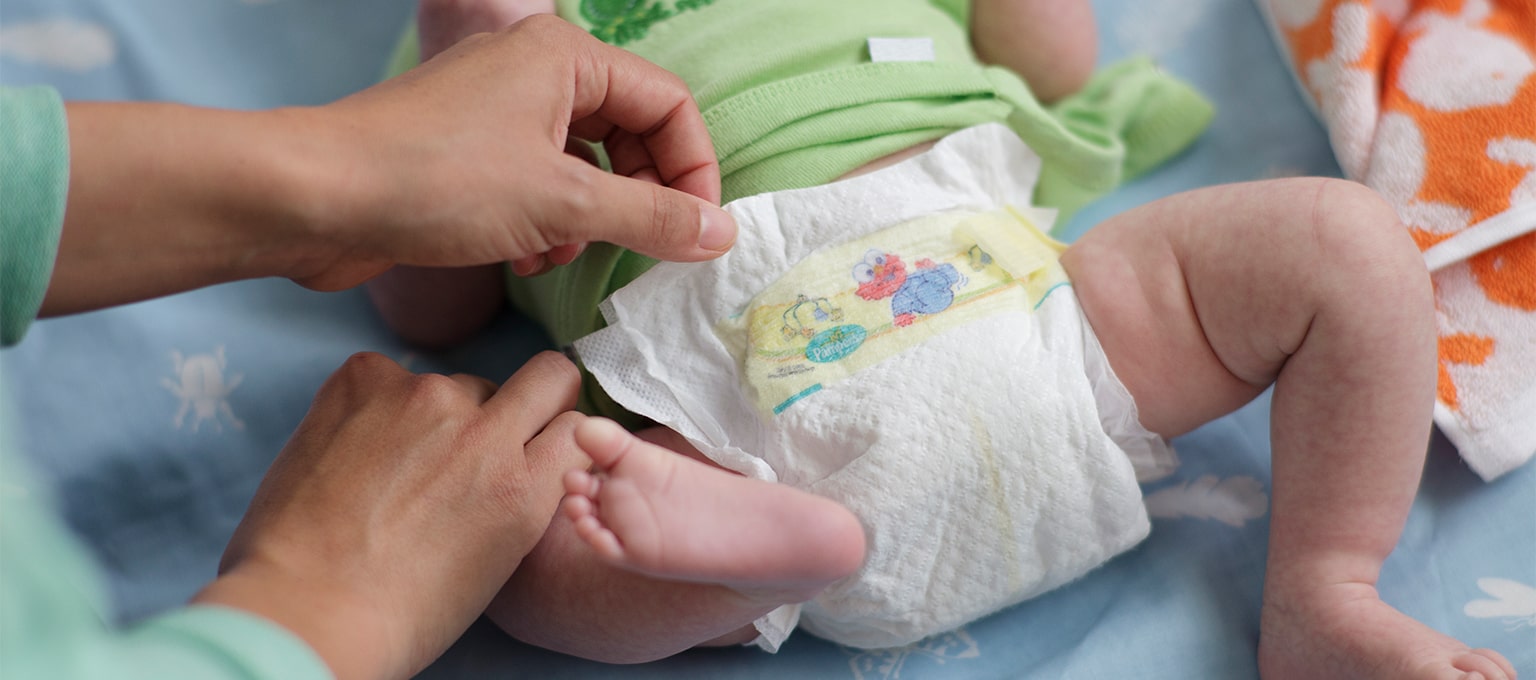
Diapering your baby is as much a part of parenting as feeding your little one. Although changing a diaper takes a little practice, it will soon become routine once you get the hang of it.
5 Quick Tips to Change a Diaper
Read on for our step-by-step guide on how to change your baby’s diaper, and learn what's slightly different about changing a boy’s diaper and a girl’s diaper. We’ll also explain how to change your toddler’s diaper so you're all set when your child becomes more active and mobile.
Plus, we’ve listed some of the signs you need to look out for that indicate your little one is ready for a bigger-size diaper so that you can avoid some of those dreaded leaks and blowouts.
Make sure you have everything you’ll need for the diaper change on hand. Once you’re ready, here’s how to change your baby's diaper in a few easy steps:
Lay your baby down on their back and remove the used diaper. Wrap it up and stick the tapes down to seal the bundle. Toss the diaper in the diaper pail or set it aside to throw out later in the garbage can. If you’re throwing the diaper into a garbage can, you might want to place it in a plastic bag first to reduce odors.
Gently clean your baby’s diaper area, taking care to get between the folds of skin. You can use gentle diaper wipes, such as Pampers Sensitive Wipes, or you can use a wetted washcloth. Remember to wipe front to back.
If your baby has diaper rash, apply diaper rash ointment or barrier cream on the affected area.
Carefully raise your baby’s legs and lower body by the ankles and slide a clean diaper underneath. The colorful markings should be on the front, facing you. Then, pull the front of the diaper up between your baby’s legs and lay it on your baby’s belly.
Lift the two wings of the diaper on both the left and right side, and stick the stretchy fastening tape found on each wing onto the front of the diaper. Make sure you don’t fasten the diaper too tightly or too loosely. To check this, you should be able to comfortably run two fingers between the diaper and your baby's stomach. The tabs should be symmetrical. Turn the leg cuffs out to prevent leaks.
Once you’re finished, ensure your baby is in a safe place, wash your hands, and clean the diaper change area, including the diaper changing table and changing pad.
Given all the times you’ll be following these steps, you deserve rewards — lots of them! Download the Pampers Club app to browse the offers and coupons you can get for your Pampers diapers and wipes purchases.
Here’s what you need to change a diaper:

Although you only need one diaper at a time, having plenty of diapers on hand can be helpful so that you don’t run out when you need one. You may even like to have some of the next size up so you’re ready with those when the time comes. Store the diapers within your easy reach but out of your baby’s reach.
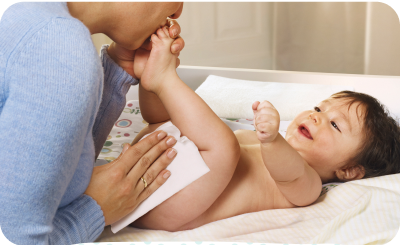
To clean your baby's bottom, you'll need wipes. Another choice is a washcloth and water.
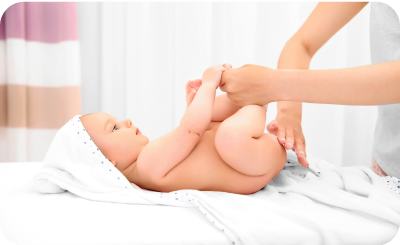
You’ll need one of these in case your baby gets a diaper rash. Most babies get diaper rash at some point. It’s most common among babies who are 8 to 10 months old. No matter the age, there are many contributing factors, including if the diaper isn’t changed often enough, if the baby has diarrhea, or if the baby has just started on solids. Your baby’s healthcare provider will be able to recommend which ointment or cream to use.
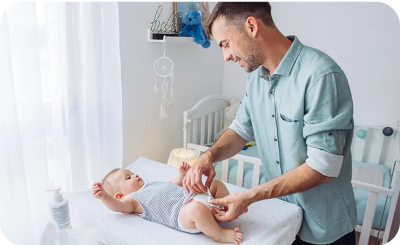
These are designed to make changing your baby easier. Choose one with a side rail on all four sides that’s at least two inches high, as these can help prevent your little one from rolling off. There are usually drawers or shelves underneath for storing your diapering essentials.
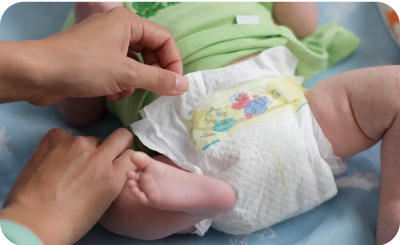
The pad goes on top of the changing table. Choose a curved one so that the middle is deeper and the sides are raised. It’s usually easy to wipe clean. Most models come with a strap, which you can use to secure your baby. Although this strap is an extra layer of security, it’s safest to always keep a hand on your baby and never leave your baby unattended on the changing table. You might also like to buy a disposable or portable changing pad that fits in your diaper bag for when you’re out and about with your little one.
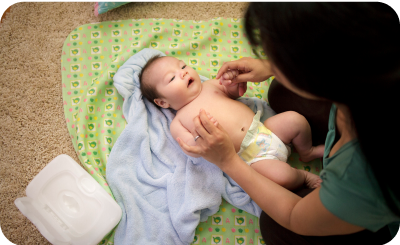
You don’t have to use a diaper-changing table or changing pad. Any flat surface will do. For example, you could use a bed, the couch, or the floor. Just lay down a towel or a blanket first to help keep the area clean. If your baby is on a raised surface (such as the bed or the couch), always keep a hand on them to prevent any falls. You may find changing your baby on the floor easiest if your little one’s in a particularly wiggly mood.
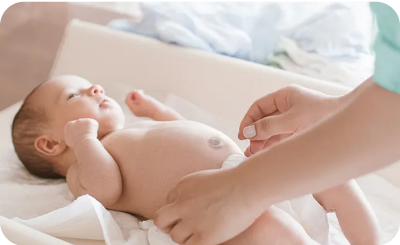
It’s helpful to have somewhere to stash your baby’s smelly diapers. A diaper pail helps lock away odors.
You might like to set up a diaper changing station in your baby’s nursery where you’ll have all the things you’ll need for diaper changes as well as the clothes your little one will change into. This way, with everything within arm’s reach, you won't have to take your eyes or hands off your baby.

Follow the step-by-step guide above when changing your boy’s diaper. Additionally, you'll want to cover his penis with a diaper or burp cloth while changing him to prevent getting wet yourself or pee getting on the wall.
Another tip is to place his penis in a downward position before closing the diaper, as this can help prevent leaks.
Follow the step-by-step guide above when changing your baby girl’s diaper, but be extra careful to wipe from front to back. This helps reduce the risk of your little one getting an infection, such as a urinary tract infection (UTI), as these are especially common among young girls. Don’t forget to gently and thoroughly clean between the folds of skin.
Find out your baby's diaper size, how many diapers you'll need per day and for how long:
If you’re a first-time parent, you may find it takes a few tries to get used to changing your newborn’s diaper. Following the above steps will help you get the hang of it.
Just after your baby is born, your midwife, doula, or one of the nurses may give you some hands-on lessons.
Keep in mind that your newborn will go through about 10 diapers a day, so you’ll have plenty of chances to practice how to change their diapers.
For the first several weeks, as you wait for your baby's umbilical cord stump to fall off, you might like to use some of the diaper changes to gently clean the umbilical cord area and check for signs of infection like a yellowish discharge or red skin in the area around the stump. If you do notice anything like this, contact your baby’s healthcare provider.
Your baby’s first few poops will be a thick, greenish, almost tar-like substance called meconium. As the meconium passes your baby’s poop will change color to a yellowy green.
Don’t be surprised if you notice a little white or bloody vaginal discharge in your baby girl’s diaper—this is normal. Also, you might see a little blood in your newborn’s stools in the first few days. This is usually harmless, but it's a good idea to let your baby's healthcare provider know.
Be sure to check with your baby’s healthcare provider if you have questions about what you’re seeing in your newborn’s diaper.
As your little one gets older, you might find it harder and harder to keep them still for diaper changes. After all, there’s so much for your toddler to do and discover, and diaper changes tend to interrupt all the fun and activity.
You could try using diapers with stretchy sides to change your wiggly toddler’s diaper. With these diapers, you simply pull them up like you would pants. Then, to take them off, you simply tear the sides for easy removal.
As you change your toddler’s diaper, you might like to tell your little one what you’re doing — this way, they can start to become familiar with what’s happening as an early step toward potty training. You might also like to dump the poop from the diaper into the toilet or potty as they watch so they can begin to make the connection that that’s where poop should go.
Follow the same steps that we listed above, making sure to change your baby’s diaper as soon as he’s had a bowel movement.
Leaving the poopy diaper against your baby’s skin increases the risk of diaper rash and leaves your little one more prone to skin infections due to yeast or bacteria.
As you change your baby’s poopy diaper, be sure to thoroughly clean away all the baby poop using a wipe or wet washcloth.
Experts recommend changing your baby’s diaper after every poop and frequently in between to ensure a wet diaper doesn’t stay on too long.
Depending on your baby’s age and whether they are breastfed, bottle-fed, or eating solids, as well as other factors like digestive issues, your baby may have a bowel movement anywhere from after every meal to once a day or even once a week. All these can be normal.
When it comes to peeing, your little one may pee as often as every one to three hours or only about six times a day.
Remember that in the beginning, your newborn will need about 10 diaper changes a day.
Some diapers have a wetness indicator so that you can see at a glance if your baby needs a diaper change.
Other signs your baby may need a diaper change include:
You reach into the diaper with a finger, and it’s damp
You can smell or see your baby's pee or poop
The diaper is sagging, or the underside of the diaper feels bulky.
Here are some signs that your baby needs a bigger diaper:
The tapes don’t reach the center of the waistband
You can’t fit two fingers under the waistband
There are red marks on your baby’s tummy or thighs
The diaper doesn’t cover your baby’s bottom
Your baby seems uncomfortable (for example, they tug at the diaper).
Our diaper size and weight chart can help you get the right fit, as can our my perfect fit tool.
If leaks and blowouts start happening, it might be time to go up a diaper size. As your baby grows, so does the quantity of pee and poop. A bigger diaper may not only fit better, but it can also hold more liquid.
Even if the diaper is the right size, if you don’t put it on correctly, you could still experience leaks. Double-check that you haven’t fastened the diaper too tightly or too loosely, that the tapes are symmetrical, and that the leg cuffs are turned out.
Read more about reducing leaks and blowouts.
Remember that a diaper rash is not caused by the diaper itself but is often linked to four main factors: overhydration, friction, imbalanced skin pH, and prolonged contact with stool. With help from your child’s healthcare provider, you can receive an expert diagnosis and treatment for managing symptoms.
Consider trying our Pampers® Swaddlers and Pampers® Sensitive™ Wipes together as a diapering regimen. These two powerhouse products are scientifically demonstrated to work together to balance pH levels, improving overall skin health and providing the ultimate comfort for your baby.
Download our Pampers Rewards App to save on your Pampers Diapers and Wipes purchases.
American Academy of Pediatrics. Caring for Your Baby and Young Child: Birth to Age 5, 6th ed. (New York: Bantam Books, 2009.)
Healthy Children. “Changing Diapers.”
Kids Health. “Diapering.”
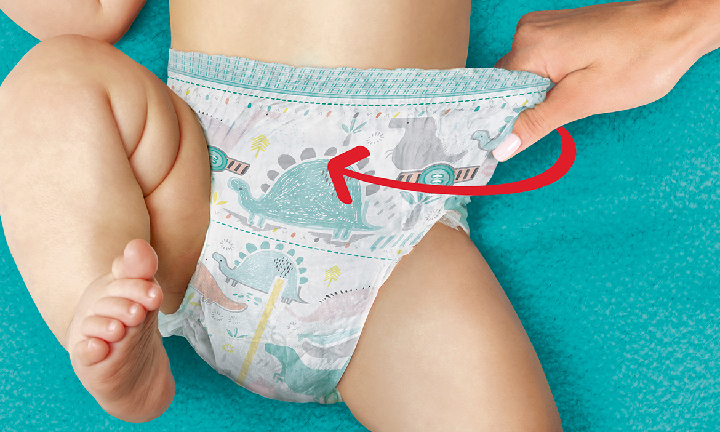
Diaper Pants, also known as training pants, have a flexible band and can be pulled on like pants. Learn about Pampers Diaper Pants performance features.
Read more
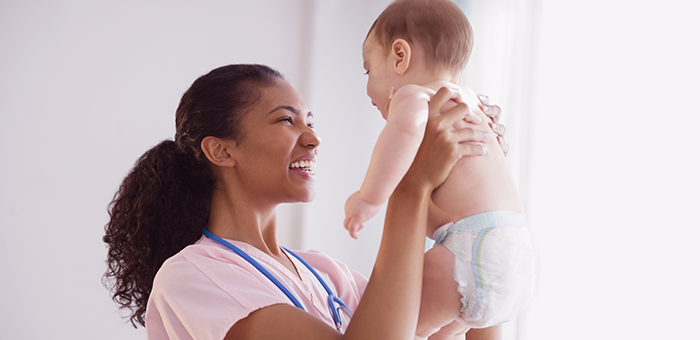
What are Pampers diapers made of? Read more about the materials used in our products to ensure optimal protection and safety for your baby.
Read more
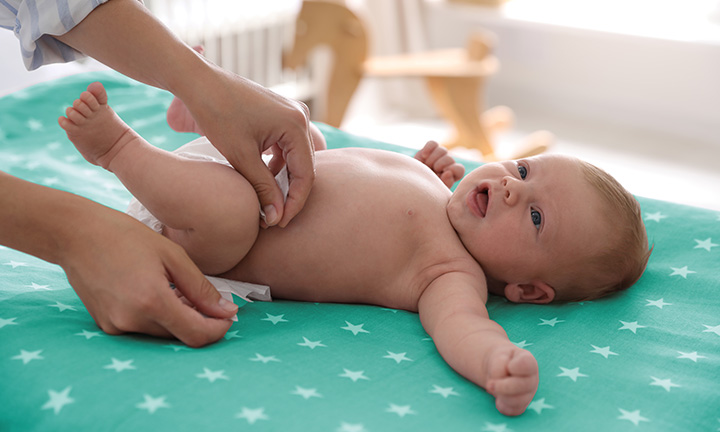
Explore the best Pampers’ diapers and wipes for unique needs such as newborns, sensitive skin, overnight use, and more, delivering comfort and protection.
Read more
Explore
Diapering